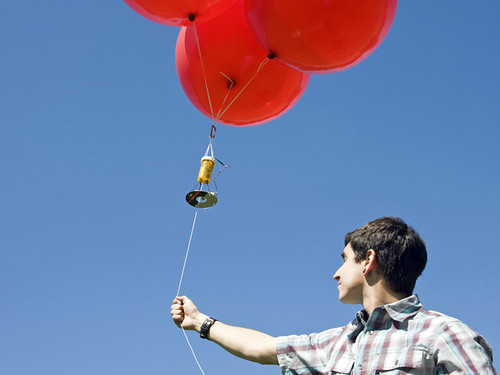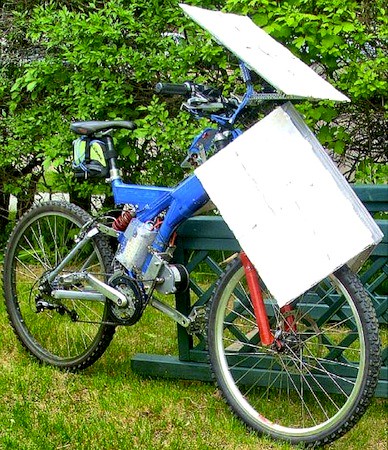Cameron Smith is making his own spacesuit. Although this is not for everybody, we think it’s very cool just the same. Wired did a piece on this a year ago…
Taking a balloon up into the lower stratosphere may seem crazy, but to Cameron M. Smith it’s an opportunity to fulfill a lifelong dream. The 45-year-old Portland State University anthropologist couldn’t join NASA’s aviation program because of his poor eyesight. Lacking the funds to buy a ticket on a private space flight, he decided to take matters into his own hands.
At 50,000 feet up, death is imminent, so the first thing to do was build a suit. Smith bought some of the parts off the Internet: a diver’s dry suit, a gauge that measures internal air pressure, and an aquarium pump to circulate cooling fluid. Ace Hardware had other bits like nylon straps, wire, and a slew of PVC fittings and valves. It’s topped off with an authentic 1980s-era soviet fighter helmet.
Once the proof-of-concept suit is complete, Smith will test his rig in a hypobaric chamber, and if all goes well it will be rebuilt with sturdier elements. Then he’ll craft a nylon balloon, get a balloon pilot’s license, and clear his route with authorities. “If they could do this in the 1930s with rubberized canvas and pigskin gloves, surely I can do it now with the technology available,” Smith says. “This is not so crazy. This is not so wild.” Sure. We’ll just stay on the ground and watch from here, thanks.
So what does he plan to do with this? Make one for Copenhagen Suborbitals, which describes itself as…
This is a non-profit suborbital space endeavour founded and led by Kristian von Bengtson and Peter Madsen, based entirely on sponsors, private donators and part time specialists. Since May 2008 we have been working full time to reach our goal of launching ourselves into space and to show the world that human space flight is possible without major government budgets and administration.

Kristian von Bengtson blogged it recently…
In just a few days DIY space suit guys Cameron Smith and John Haslett will visit us in Copenhagen for a 10-day session of suit presentation, seating design and space suit testing.
We are all very excited and I am trying to get prepared for this special event. Even though we joined forces half a year ago – meeting in person like this is going to be very special and will mark a special celebration of a US/Danish joint venture space adventure!
This is one of the most interesting DIY projects we’ve ever seen.







